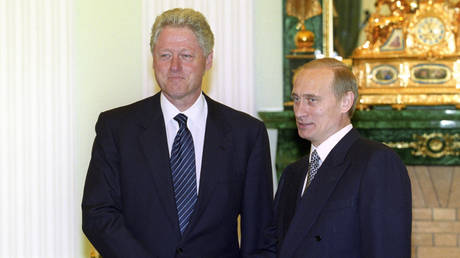Starting a freelance career requires a ‘push’ season. Here’s how you navigate that.

Freelancing is gaining popularity today, given the instability of the full-time job market and the benefits that self-employment can offer. Nearly 58 million Americans consider themselves “independent workers.” That’s 36% of employed respondents, up from 27% in 2016, according to a McKinsey survey.
Despite increasing interest and the numerous perks to freelancing, it can be difficult to start. As a freelancer of 12 years, the beginning is what I call the “push season.” This requires a significant push to attract clients, deliver work, and set up operations.
At first, there are many uncertainties. You’re reassessing your professional identity, which can bring up a lot of new feelings. You’re also responsible for taking on every function of the business, from accounting to marketing and sales. And most important of all, you’ve got to bring money in the door to ensure it’s a viable venture.
Whether you’re putting in more hours, effort, or energy, the goal is to establish your client base and business foundation. At the same time, you want to avoid burning out in the process.
Navigating this push season intentionally can better position you for continued stability as a freelancer. Here’s what worked for me and other seasoned freelancers.
Attracting clients during the push season
When you first get into freelancing, you’re starting fresh. Yes, this is still the case even if you’re leveraging some of the trust, connections, and experience you’ve built in previous full-time roles.
It’s going to take time to build up your reputation, relationships, and expertise around offering your services in a freelance capacity. The initial two to three years are often the push season, This is where you’re building significant momentum around your offerings as an independent contractor. You’ll mainly focus on three key areas: attracting clients, balancing your workload, and structuring your business for longevity.
Bringing on clients, for example, requires you to make consistent efforts to market yourself to potential customers. This is likely going to take up a lot of time in the initial period. When I started freelancing, I sent about 20 cold email pitches a week to companies that would benefit from my writing and marketing services. I also messaged colleagues on LinkedIn. That way, they can keep me in mind for this type of support, and I regularly shared educational posts on social media.
Now, some of this is about scale (like how much outreach you’re doing), but most of this effort is about regularly communicating your value to the right people in the right places.
“I had to invest way more time and energy into finding paying work and clients. That’s a bigger time suck than people might think it is,” says Kat Boogaard, a freelance writer of 11 years who sometimes worked 60-plus hour weeks during her initial push season.
“While I used to spend a lot of time sending cold emails and scouring freelance job boards, more of my work started to come through referrals or other inbound efforts as I got more established,” she says.
Landing clients takes a lot of effort up front, but it is a worthwhile investment. Once you’re established and clients know you from your work, you can begin to ease up on these activities.
How to balance a freelance workload
Another important aspect is balancing your workload is determining how many projects you need to take on to build financial stability. At the same time, you don’t want to sacrifice quality or burn out. This will require some trial and error. As you take on a mix of tasks and different deliverables for clients, assess (and document) how long it takes you to complete them.
Taking on too many assignments or a project requiring more time than expected led to many long work days in this phase of my freelancing. Limit spells of overworking by giving yourself more runway on each project. This way, you can leave room for downtime between tasks, and thoughtfully increase your pricing over time.
Mimi Gonzalez is a a social impact strategist and Gen Z inclusion consultant. She’s been freelanced for close to three years, and said that this season required her to let go of certainty and structure. Systems that once felt safe no longer served her when she became a freelancer.
Recognize that moving to freelance work requires a considerable mindset shift. You’re going from completing assigned tasks in a full-time role and being accountable to a boss, to designing your workload without supervision. This change may also require you to redefine what career success looks like to you.
Prioritize longevity in your practice
You’ll also want to structure your freelance practice for the long term. Many people treat freelancing as a stopgap, which is great if that’s what you’re after. However, if you want to ensure that it’s a viable career trajectory over time, you’ll need to diversify.
This entails finding a mix of clients, supporting multiple industries, or trialing different service offerings. Doing so allows you to gain stability and reduce reliance on any single source of income. At the same time, you’re likely setting up a website, business insurance, accounting system, and the other typical building blocks of getting your freelancing in motion.
The challenge here is prioritizing these tasks that will allow you to get your practice running while making long-term investments in future progress. It’s a constant process, but like any season of freelancing, you’ll move through it.
“Push seasons aren’t one-time events. Every new level of visibility, income, and purpose brings a different kind of push and set of decisions you have to make,” says Gonzalez.
Gonzalez went on to say, “And then there are calmer seasons, when your work carries its own momentum and opportunities arrive because people already believe in what you’ve built. That first push season will always stay with me, though. It required urgency to build visibility and momentum quickly.”
What's Your Reaction?
 Like
0
Like
0
 Dislike
0
Dislike
0
 Love
0
Love
0
 Funny
0
Funny
0
 Angry
0
Angry
0
 Sad
0
Sad
0
 Wow
0
Wow
0






























































































